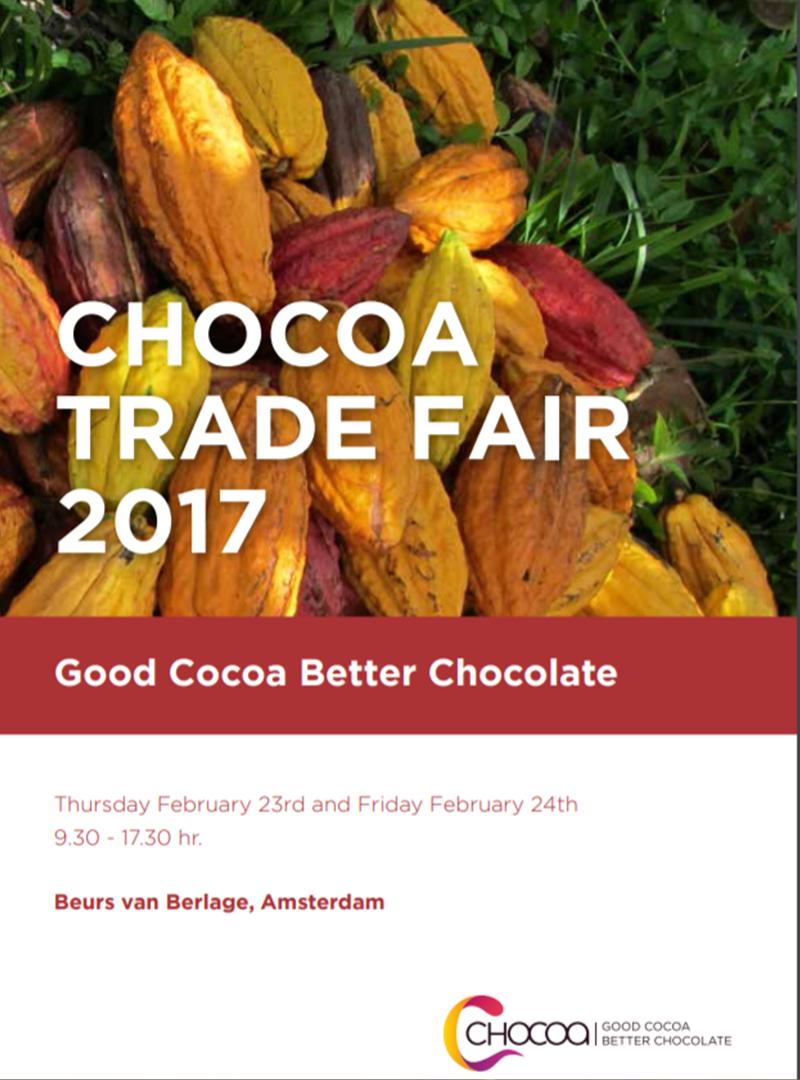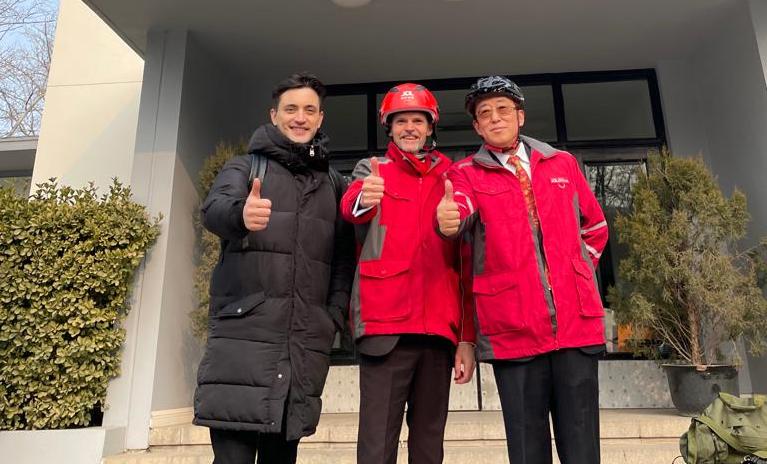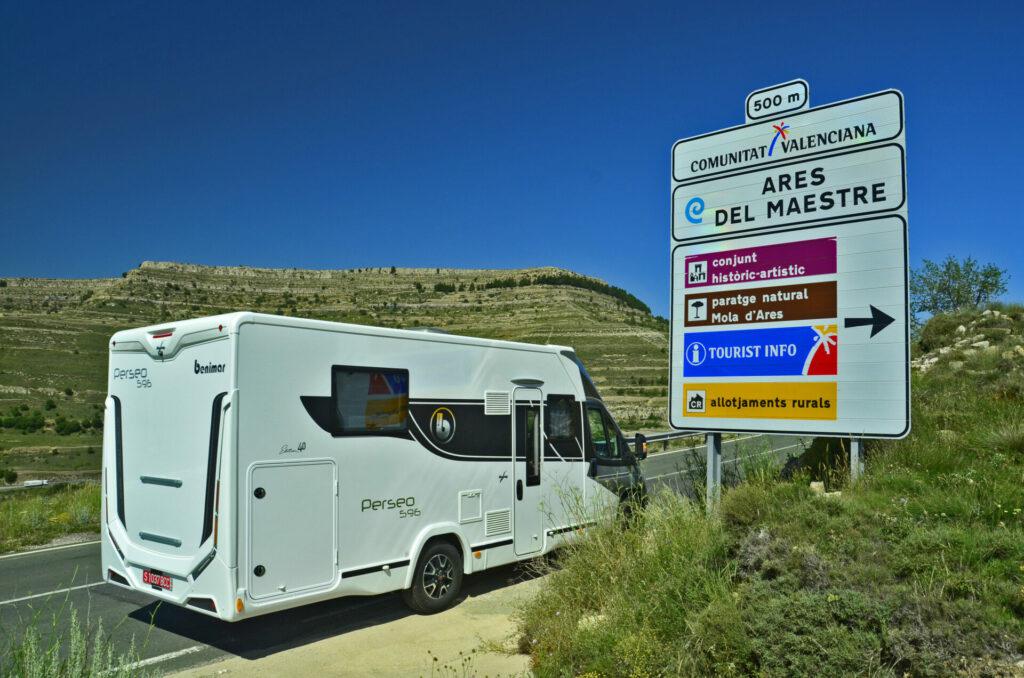The official monopoly of Venezuelan cocoa begins in Miranda
In his campaign as a candidate in the regional elections of October 2017, he barely mentioned the agricultural sector as part of his government plan. However, in just eight months as governor of the state of Miranda, Héctor Rodríguez -hand in hand with the ruling United Socialist Party of Venezuela, PSUV- set up a circuit to capture and negotiate the precious Barloventeño cocoa independent of the rest of the State institutions.
The structure is made up of the Mirandina Cocoa Corporation, the Miranda Export Society, the Mirandina Production Corporation and the Miranda Agricultural Development Corporation, as well as the Francisco de Miranda Corporation for the Development of the Tuy River Basin ( Corpomiranda), of which Rodríguez is also president. A bureaucratic framework that manages a simple principle: regulate the price of cocoa in bolivars, equivalent to a few cents paid to the producer, concentrate production and export it at international prices in foreign currency.
The “in society” presentation of this system occurred in April of this year, when Rodríguez presented Plan Cacao. "The best cocoa and chocolate in the world," he said proudly in front of representatives of community councils, farmer councils, private companies and producer associations from the Mirandino municipalities who attended the meeting to learn about the project that, as confirmed, would be carried out jointly with the Ministries of Productive Agriculture and Land, Foreign Trade and Defense. The plan would have four dimensions: raising production, marketing, distribution and export.
Since January, it had been working at half speed and coincided with the resolution that prohibits the export of primary production, processed, agro-industrial and finished agri-food items, published in the Official Gazette No. 439,627. However, this was not an impediment for him to speed up his pace in April and according to Manuel Gómez, general director of the Acción Campesina Civil Association, the new governor began the plan to control the cacao buying and selling structure.
“That monopolization is the problem: first, they set prices below the market; second, they don't pay like a middleman and, third, it's a compulsive and authoritative process. That is, either you 'sell me or you sell me'. We are talking about the imposition of a policy by the government that affects the economy”, explains Gómez. Although the private company was the one that used to absorb all the cocoa production, now they must necessarily go through the intermediation of the State.
The “socialist barter”
According to the plan of the Cocoa Plan in the state of Miranda, for each kilo sold at the price regulated by the government, the producer must pay a fee of 15% to the corresponding mayor's office and they are committed to providing technical assistance and accompaniment. “But in reality the municipalities are not contributing anything to production. There is no security, there are no good roads, there is no Internet to register the mobilization and obtain the guides”, says Vicente Petit, general manager of the National Association of Cocoa Producers (Asoprocave).
Apart from the municipal percentage, producers must pay 20% of each kilo to the intermediary, who buys and resells. In the end, the producer ends up receiving only 65% of the sale without counting that, in addition, he is paying the patent of industry and commerce. When the Cocoa Plan was presented, the government set the price of the quality bean of fermented fine aroma cocoa (F1) at 500,000 bolivars (around 50 US cents for April of this year) and 300,000 bolivars for standard cocoa, of lesser quality, or F2.
This meant that the producer received about 325 thousand bolivars per kilo of F1 and 195 thousand bolivars per kilo of F2. Thus, in a simple account, it would be the ruin of the business that is often said to be "the best cocoa in the world" if one takes into account that the private company paid about 850,000 bolivars to the producer, without discounts and in cash at the time of the transaction.
The government of Miranda offers the producer a kind of “socialist barter”: in exchange for quality cacao, it says that it will pay the producers a part in social benefits and the other in bolivars, but at a rate that ends up evaporating into a hyperinflationary context. For a sector that was previously Chavista, with so many social deprivations and economically depressed, exposed to insecurity, invasions, kidnappings, and the theft of cocoa, this government offer looks like the only acceptable option. The Government also offers a letter that it had up its sleeve, the delivery of land titles to producers and peasants.
“Who is the only one that socially cares for the producer?”, read a pamphlet distributed by the pro-government mayor's office of Acevedo, in the state of Miranda, which then detailed the government's social programs as a way of promoting producer confidence to deliver their crops.
But not everyone is happy with the promise of this exchange. In the heart of Barloventeño, Ciro Martínez, president of Asoprocave, spoke on Thursday, May 31, 2018, in an improvised auditorium with nearly 200 affected and organized Mirandino producers, and representatives of peasant councils from almost all municipalities. After a few minutes in front of the microphone, he took confidence to tell them forcefully that "the State, as the authority that it is, that represents our people, whom we elected to govern us, really wants to govern us, because they want to put their hand in our hands." in our pocket, apart from the fact that they put it in our stomachs”. Steal the applause of the attendees.
Even clearer was Gustavo, from the La Balsa Campesino Council, who recalled that the intention to buy very cheaply from producers is not only from the Government, but from the State itself, since the president of the Socialist Cocoa Corporation from the Ministry of Agriculture and Lands - offered him 280 bolivars per kilo of cocoa. “They called me to buy cheap cocoa. I'm going to give them the truck, the machete, the hook, the stick, and for them to go into the mountains to get their cocoa.”
As part of the official strategy to restrict private companies from directly acquiring the seed from the cocoa farmer, in the state of Miranda the confiscation of loads for the mere fact of passing through the territory of that entity, regardless of whether the cocoa was produced in another state. The delivery of the mobilization guides is frequently paralyzed and, in addition, some producers are usually accused of fomenting mafias and "cocoa is a source of financing for paramilitary apparatuses", according to the words of Héctor Rodríguez during the shipment of cocoa to Estonia.

“There is the illegal collection at the National Guard checkpoints, there is that diffuse institutionality of compulsively buying cocoa and, now, these parastatal companies are being created. The producers are the big losers in this situation”, is the panorama that Gómez draws of what is happening with cacao.
These complaints were widely spread before the Miranda Governor's Office, the Ministry of Productive Agriculture and Land, the Socialist Cocoa Fund, the Science and Technology Commission, as well as the Finance and Economic Development Commission of the National Assembly. In the hearing before the deputies were María Fernanda Di Giacobbe, founder of Cacao de Origen and Morella Briceño, representing the Bean to Bear movement of Venezuela; Francisco Betancourt, head of the Agricultural Unit of Chocolates El Rey; Milagros Valera, deputy of the Miranda State Legislative Council; Vicente Petit, from Asoprocave, among others.
Faced with such a scenario, cocoa farmers admit the possibility of migrating to another area. Some have opted for the manufacture of handmade chocolate and derivatives, although they report that they also have problems. The trucks with sugar are retained in alcabalas and appear with a premium marked by the Miranda Agricultural Development Corporation, another of the production control structures.
An adequate plan
Recently, the Venezuelan government signed an agreement with the United Nations Industrial Development Organization (UNIDO) in which they provide the State with resources to strengthen the value chain agroindustrial. The 2018-2021 Country Program must guarantee the availability of raw materials, including cocoa; assume modernization, increase exports and technology transfer.
With or without assistance from the program, unlike his predecessor, Héctor Rodríguez has had no problem getting financial support to carry out his plan. Miranda is the second state to which more budgetary resources have been allocated by the central government, the first being Zulia. Via the Development Bank (Bandes), 600 billion would be made effective to specifically promote this item. However, the achievement of the goal requires the chess pawn, that is the producer.
But this is not the first time that the Venezuelan state wants to get its hands on cocoa. The shameful experience of the National Cocoa Fund created in 1975 during the government of Carlos Andrés Pérez is repeated with Chavismo. Then the monopolization of the product lasted a little more than 10 years with the only consequence that a good part of the area planted with cocoa was irretrievably lost. While in 1975 20 thousand tons were produced per year, when the National Fund was liquidated only half was counted.
The “revolutionary” government was barely able to come up with those numbers. Until the beginning of 2018, Venezuela produced some 16,000 tons, according to the Venezuelan Chamber of Cocoa (Capec). The Socialist Cocoa Corporation never managed to reach the goal set in the Socialist Cocoa Plan, promoted by the late Hugo Chávez, which estimated a production of 27,286 tons for 2011 and, for this year, 48,937 tons.
Special thanks to alums Lianne Henderson and Courtney Herndon for chatting with our 1Ls today on how to choose a legal specialty! #lawschool
— New England Law | Boston Fri Sep 29 19:34:16 +0000 2017
This corporation, a dependency of the Ministry of Productive Agriculture and Land, continues to work under the radar, overshadowed by the Mirandino governor who promises to increase production from 250 kg to 800 kg per hectare, using his own seeds. An ironic smile leaps from the face of Ciro Martínez, from Asoprocave. “They have even finished off the germplasm bank,” he warns resignedly.
Miranda spearhead
According to estimates by the Acción Campesina civil association, the area planted with cocoa is distributed mainly between Barlovento, with some 8,000 hectares, and the Paria Peninsula, which has about 20 thousand hectares. Both concentrate 90% of the production of the item. The rest is distributed between Ocumare de la Costa (Aragua), La Victoria de Barinas (Barinas), Sur del Lago (Zulia) and Tucupita (Delta Amacuro).
Miranda would be the precursor state of Plan Cacao as an agricultural policy, but it seeks to extend it to other regions such as Sucre and Zulia with the same pattern and using the figure of state companies: Sucrex and CorpoZulia. Despite this situation, there is no legislation to protect the sector, much less the producing farms, nor does it describe the corporate structure for the management and marketing of cocoa. There are hardly any statistics.
Meanwhile, the private initiatives with the longest history are drowned in procedures and, this blockade, gives way to new actors who join the government to enter the state monopoly. Héctor Rodríguez rises up as the cocoa czar of Miranda to promote an atomized sector helped by an economic cabinet made up of the familiar faces of the Youth of the government party, the former Minister of Women, Andreína Tarazón; the former mayor of Boconó, Miguel Marín; the constitutionalist, Ricardo Moreno and the former director of the National Sports Institute, Miguel Bermúdez.
Cocoa for Estonia
Chuao, in Aragua state, produces a very particular cocoa and its producers have been concerned about a post-harvest that raises their quality standards. By 2015, the Italian company Amedei bought a kilo of cocoa from that area for around 16 dollars. That was an exclusive contract that they had for that extremely valued cocoa. In the case of Sur del Lago (Zulia state), with very attractive Criollo cacao, the purchase price at the beginning of June was between 2.5 and 5 dollars per kilo. In the central region (Ocumare de la Costa, Cata, Cuyagua and Barlovento), to the east (Sucre state) and in the plains (Barinas state), the average purchase cost to the producer could be around 1.5 to 2 dollars per kilo .
You pay more for better quality. Although that premise does not work for the "socialist" Miranda of Héctor Rodríguez. Cocoa brought to government institutions is paid for half a dollar plus a bag of food and the possibility of having a street paved for them.
Along with this program, the shipment of what would be "the first of many exports" was added, according to the governor's words. In total, 75 tons of Venezuelan cocoa left, at the beginning of June, from the port of La Guaira to Tallinn, the capital of Estonia. According to official statements, the grain was top quality, superior carenero, produced and processed in the Acevedo and Andrés Bello de Barlovento municipalities. He assured that "new shipments will leave this land bound for countries in Asia and Europe."
Fruca Foods, C.A. was chosen for that first shipment. Its representative is Martín Merckx Landaluce, a young businessman who is also a director of two public limited companies in Panama, founded more than 18 years ago. At two Dicom auctions last year, he was awarded $51,419.
A few steps from the governor in one of the hangars of the port of La Guaira, Martin shows that he has talked with clients in Portugal and some Chinese, without finalizing the sale. When approached by journalists, he does not reveal the total amount, but it is curious that he stops to point out that "cocoa is paid with premiums and discounts, and this is ordinary cocoa", which is known as F2. International markets tend to value it below its price.
“Venezuela, from my point of view, should not export ordinary cacao because there is no justification for us to have the crown jewels in this country and take ordinary cacao. In other words, cocoa that is not processed properly and goes out to compete with African cocoa, which makes no sense in any part of the world," says Leudys González, president of Fundación Nuestra Tierra.
It was Miguel Marín, secretary for Agri-Food Sovereignty of the state of Miranda, who assured that the negotiation generated a profit of at least 50 thousand dollars for the country that will go to an investment fund of the Government of Miranda for "attention to the communities that produce it, in terms of health, education, security, among others”, according to what was published on the VTActual portal. The price per ton for that first shipment was about $667, not the $2,500 that it is trading internationally at according to the London Stock Exchange for June of this year.
The kilo of Venezuelan cocoa that they exported to Estonia would cost a little less than a dollar ($0.67). If it is valued at international prices, we would be talking about $187,500 and not the $50,000 that Marín claims the Miranda government received.
Higher but insignificant
The price of cocoa on the London and New York stock exchanges is governed by more solid export markets such as the Ivory Coast, Ghana and Nigeria, which concentrate the largest world production. Venezuelan cocoa does not represent even 1% in international trade but its quality is superior to many, due to its genetic characteristics, and it is used to produce fine aroma chocolate and other derivatives. Only Europe and North America gather 75% of the consumption of chocolate and its derivatives, from there it goes to Asia.
“You are going to sell the best cocoa in the world cheap because you are not working it well”, is one of González's comments during the 2018 Chocolate Expoferia, in the Military Circle of Caracas, a space that smells of government.
This defender of cocoa emphasized the international brand of the product that is fighting to acquire Denomination of Origin (DDO), which would raise its price even more. “You cannot send an F2 that is not suitable for haute chocolate. Who are you going to compete with? Our market is more select, it exists and it can sell a cocoa for 20 euros per kilo, well worked”.
Fifteen days after cocoa was sent to Estonia, there was a new export related to the item. 2,000 boxes of cocoa butter weighing 40,000 kilos were sent to the Netherlands. In addition, Corpovex, as a token of the red monopoly, signed new cocoa export agreements assigned to a cooperative in the Sucre state that linked with the Dominican Republic. Even representatives of the national government and the Ivory Coast sat down to evaluate the export of cocoa, coffee and palm oil.
According to the Observatory of Economic Complexity, in 2016, Venezuela exported cocoa beans, mostly, to Japan and Europe. The United States, Estonia and Russia represented a smaller market, however, only this item generated some $28.5 million. In the case of Estonia, Venezuelan cocoa beans went from being a product with an export value of $3,280 in 2011 to $615,000 in 2016.
This shipment surprised more than one person. Especially to private entrepreneurs who are now faced with regulations and changes, at the discretion, of government policies.
“I have been in the cocoa business for 40 years and I had never heard that Venezuela has exported to Estonia. Our markets are mainly European: Germany, the Netherlands and France”, comments Juan Martiz, from Chocolate Carbonero.
For Jorge Redmond, president of Chocolates El Rey and known in the international cocoa trade, the transaction funnel from Bolivarian Venezuela is still very complex. Since his farm was expropriated more than a decade ago in the hope of recovering it, he outlined a successful strategy of providing assistance to small farmers. The purchased product was meticulously cared for and marketed directly to international markets.
Redmond was faced with the red tape of having to “comply with at least 90 requirements and 16 ministries” in order to export. In the case of Chocolates San José, they complied with everything requested by the Foreign Trade Center, according to the exchange agreements in which they had to return to the country 40% of the exported value, in foreign currency or assets. They opted for the second alternative and, since February of this year, when they incorporated new regulations, they demand that they repay the currencies of the last 4 years because they do not recognize the importation of assets.
“The export permit is at stake,” says Juan de Dios Franceschi, who has dedicated himself to the family business of producing and exporting cocoa from Sucre state, on a farm whose cocoa history dates back to the 19th century. .
Even with this scenario, Venezuelan cacao continues to be presented at international events. In February of this year, private representatives arrived in Amsterdam at the International Chocolate Fair, one of the most prominent in the area. Chocolates El Rey was present. They were not the only ones, other names that are currently negotiating with the government or belong to its bureaucratic structure also stand out: Gedaylaca C.A, Cacaos de Venezuela-Bancoex and Procesadora Cacao Real. Other names appear in the brochure: Cacao Bengona, Cacao de Oro, Cacaos Caracas, Esaina Fine & Flavor Venezuelan Coca, Hacienda Cacao Caribe, 1700 Grados Project, Valle Canoabo and Tricoa.
In April, Luisa Urbáez, president of the Socialist Cocoa Corporation, had her right to speak at the 2018 World Cocoa Conference, which was held in Berlin.
The risk of this escalation of government control in the cocoa sector is that what happened with coffee happens and leaves the entire sector in checkmate. Shortage of supply, that producers decide to change branches because another is more profitable and that the commitments abroad acquired with fine aroma chocolatiers are not fulfilled, by not guaranteeing quality, quantity or time. The Venezuelan cocoa brand is preserved, in the darkness of the negotiation.







